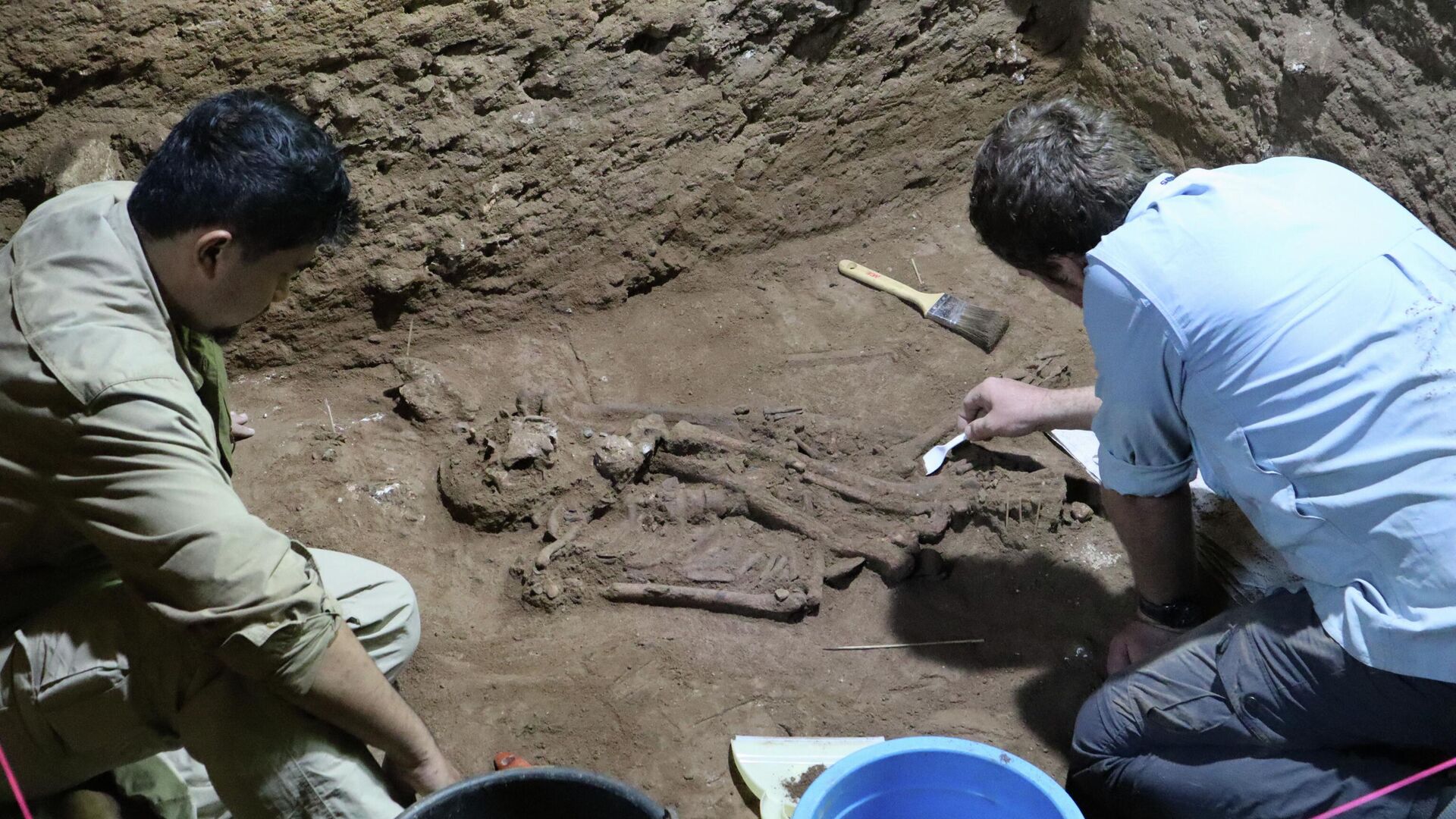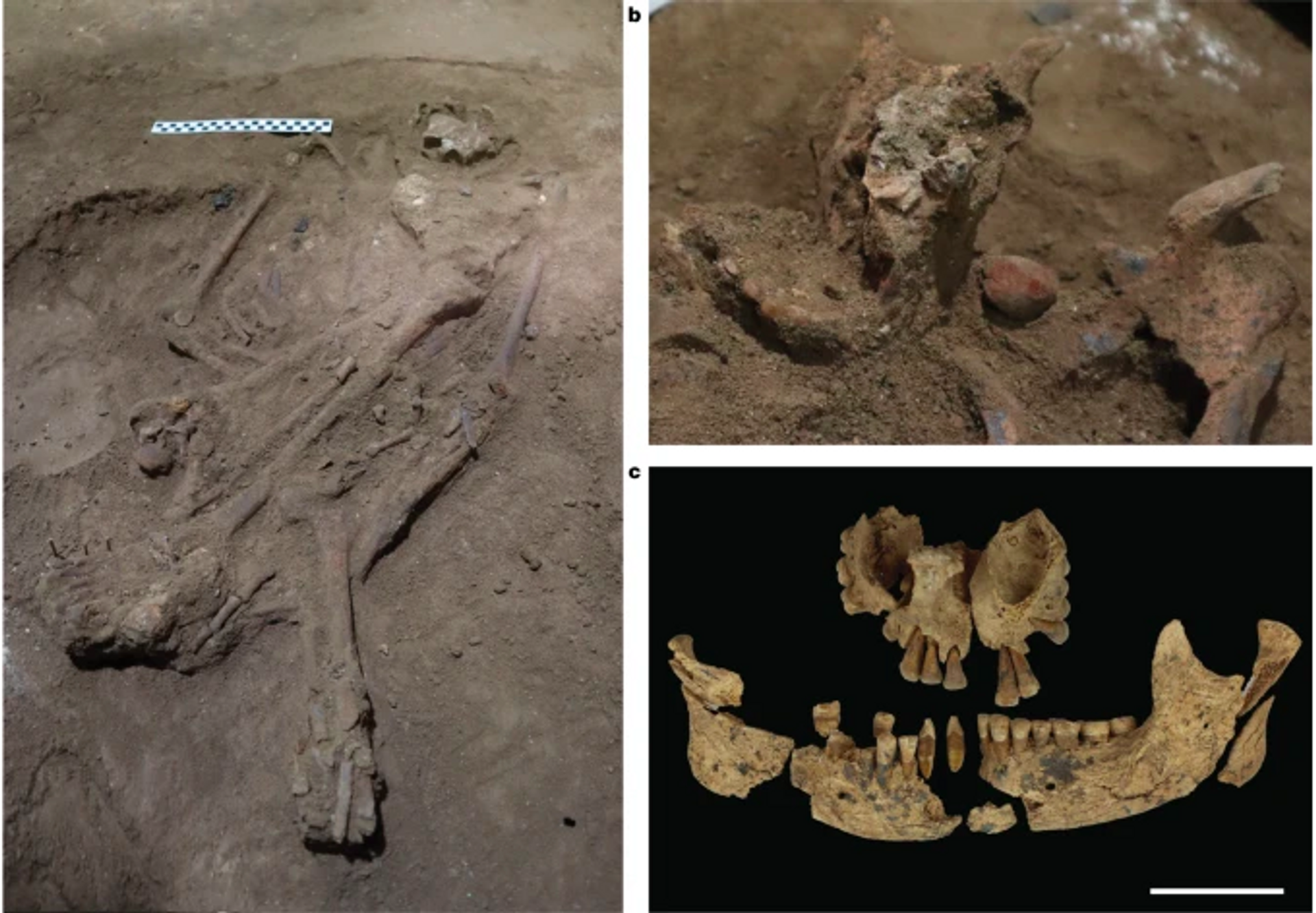https://sputnikglobe.com/20220908/worlds-oldest-amputation-skeleton-reveals-limb-surgeries-were-a-thing-31000-years-ago-1100534054.html
World's Oldest Amputation? Skeleton Reveals Limb Surgeries Were a Thing 31,000 Years Ago
World's Oldest Amputation? Skeleton Reveals Limb Surgeries Were a Thing 31,000 Years Ago
Sputnik International
Until recently, it was believed that complex medical practices, including amputations, were developed around 10,000 years ago. The earliest example of an... 08.09.2022, Sputnik International
2022-09-08T16:12+0000
2022-09-08T16:12+0000
2023-04-21T10:42+0000
surgery
surgery
surgery
surgery
surgery
science & tech
https://cdn1.img.sputnikglobe.com/img/07e6/09/08/1100548990_0:160:3073:1888_1920x0_80_0_0_f200f20351e0f339ac2b1e745dced252.jpg
Archaeologists have found a 31,000-year-old skeleton of a man in a cave in Indonesia missing his left leg, reportedly proving that amputation or bone removal surgeries were known to Stone Age people.It is also the oldest evidence of amputation known so far.A study published in Nature.com on Wednesday reveals "the discovery of skeletal remains of a young individual from Borneo who had the distal third of their left lower leg surgically amputated, probably as a child, at least 31,000 years ago.""The individual survived the procedure and lived for another 6–9 years," the research reads.The remains were found in the Liang Tebo cave, located in East Kalimantan, Indonesian Borneo, which also has some of the world's oldest-dated rock art."Evidence of a successful limb amputation suggests that at least some modern human foraging groups in tropical Asia had developed sophisticated medical knowledge and skills long before the Neolithic farming transition (10,000 years ago)," the study reads.This early surgery "rewrites the history of human medical knowledge and developments," Maloney added.
Sputnik International
feedback@sputniknews.com
+74956456601
MIA „Rosiya Segodnya“
2022
Deexa Khanduri
https://cdn1.img.sputnikglobe.com/img/07e4/0c/1e/1081607388_0:0:961:960_100x100_80_0_0_e9e931b8c1e18fb41f3074e2145d7a3a.jpg
Deexa Khanduri
https://cdn1.img.sputnikglobe.com/img/07e4/0c/1e/1081607388_0:0:961:960_100x100_80_0_0_e9e931b8c1e18fb41f3074e2145d7a3a.jpg
News
en_EN
Sputnik International
feedback@sputniknews.com
+74956456601
MIA „Rosiya Segodnya“
Sputnik International
feedback@sputniknews.com
+74956456601
MIA „Rosiya Segodnya“
Deexa Khanduri
https://cdn1.img.sputnikglobe.com/img/07e4/0c/1e/1081607388_0:0:961:960_100x100_80_0_0_e9e931b8c1e18fb41f3074e2145d7a3a.jpg
surgery, surgery, surgery, surgery, surgery, science & tech
surgery, surgery, surgery, surgery, surgery, science & tech
World's Oldest Amputation? Skeleton Reveals Limb Surgeries Were a Thing 31,000 Years Ago
16:12 GMT 08.09.2022 (Updated: 10:42 GMT 21.04.2023) Deexa Khanduri
Sputnik correspondent
Until recently, it was believed that complex medical practices, including amputations, were developed around 10,000 years ago. The earliest example of an amputation was found in a farmer whose arm was removed about 7,000 years ago.
Archaeologists have found a 31,000-year-old skeleton of a man in a cave in Indonesia missing his left leg, reportedly proving that amputation or
bone removal surgeries were known to Stone Age people.
It is also the oldest evidence of amputation known so far.
A
study published in Nature.com on Wednesday reveals "the discovery of skeletal remains of a young individual from Borneo who had the distal third of their left lower leg surgically amputated, probably as a child, at least 31,000 years ago."
"The individual survived the procedure and lived for another 6–9 years," the research reads.
The remains were found in the Liang Tebo cave, located in East Kalimantan, Indonesian Borneo, which also has some of the
world's oldest-dated rock art.
"Evidence of a successful limb amputation suggests that at least some modern human foraging groups in tropical Asia had developed sophisticated medical knowledge and skills long before the Neolithic farming transition (10,000 years ago)," the study reads.
"The remaining leg bone showed a clean, slanted cut that healed over," said Tim Maloney, an archaeologist at Griffith University in Australia and the study's lead researcher, adding that child could have been bitten by a creature like a crocodile.
This early surgery "rewrites the history of human medical knowledge and developments," Maloney added.





